You are here
New Releases
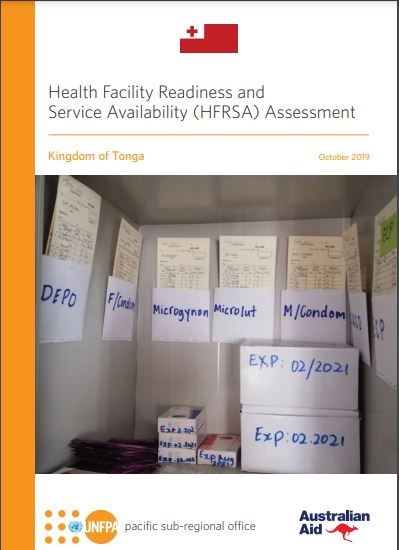
Health Facility Readiness and Service Availability (HFRSA) Assessment
The Kingdom of Tonga is making steady progress toward Universal Health Coverage. Currently, skilled birth attendance coverage is 98%, neonatal tetanus protection is 100%, and measles immunization 99%. The Pacific RMNCAH Workforce Assessment found that Tonga provides 94% of the 124 essential RMNCAH interventions recommended by the Global Strategy for Women’s, Children’s and Adolescents’ Health. Missing interventions in the Tonga minimum guaranteed benefits package include: (a) Detection of risk factors for genetic conditions as well as management of genetic conditions both in the antenatal and postnatal periods; (b) Prevention of and response to harmful practices such as early and forced marriage; and (c) Workforce potential to meet the RMNCAH needs based on the minimum guaranteed benefits package is at 97%. The Kingdom of Tonga is committed to Universal Health Coverage by 2030. The Health Facility Readiness Assessment Report, funded by Australia and implemented by UNFPA, is critical to bridge the gaps in universal access to SRHR in Tonga and in support to overall UHC in Tonga. Tonga’s health system is comprised of one referral hospital, three community hospitals, and fourteen (14) health centers and thirty-four (34) maternal and child health clinics, including the outer islands. The findings and the recommendations of the HFRSA Assessment will inform planning and investment decisions to strengthen the Tonga Health system. In particularly, information on the readiness of health facilities to provide basic health care interventions for Reproductive, Maternal, Newborn, Child and Adolescent Health are essential to quality planning, managing and decision for the adequate resourcing to deliver quality
health service is essential. The HFRSA Assessment comes at a crucial time, as the Ministry of Health looks to review the current strategic plan to absorb new programs and developments in the Ministry from the last five years. Furthermore, to consider the ongoing works on the Package of Essential Health Services and the Health Facility Costing
project.

State of the Pacific Youth 2017
The State of Pacific Youth (SOPY) report is fourth in the series of SOPY reports, which span almost two decades. The SOPY has become an authoritative situation analysis on youth development across Pacific island countries and territories (PICTs). Previous reports were published in 1998, 2005, and 2011. This latest report provides a stocktake of progress across a broad range of development issues and attempts to analyse any significant changes that have taken place in the period since 2011, including the uptake of recommendations made in the previous report.
It is built around a conceptual framework of Pacific youth development, which includes five key domains: i) health and wellbeing, ii) education and learning, iii) employability and employment, iv) civic and political participation, v) protection and safety, and gender equality and disability as cross-cutting themes.
SOPY report provides recommendations on ways to strengthen policies and programming at the regional and country levels. The intended audience of this report includes policy makers in government, regional bodies, international agencies, NGOs, and young people themselves.
As with previous reports, this SOPY report draws upon available data. However, this report differs from previous reports by developing a conceptual framework and suggested indicators that can support a more systematic approach to monitoring youth development across the Pacific region. Thus, this edition of SOPY report involves a strong focus on obtaining relevant quantitative data and is, as a consequence, more data-focused than its predecessors. The hope is that this will provide a platform for evidence-based policy making and the monitoring of youth development across the Pacific region. It is further hoped that the data obtained and analyzed will help make a better case for investing in young people, including the identification of priorities for resource allocation.
SOPY Report is a product of collaborative work by the members of the UN Pacific Regional Youth Theme Group (namely ILO, UNDP, UNESCO, UNFPA, UNICEF, UN Women, and WHO), the Pacific Community (SPC), the Pacific Youth Council (PYC), and the Commonwealth Secretariat.
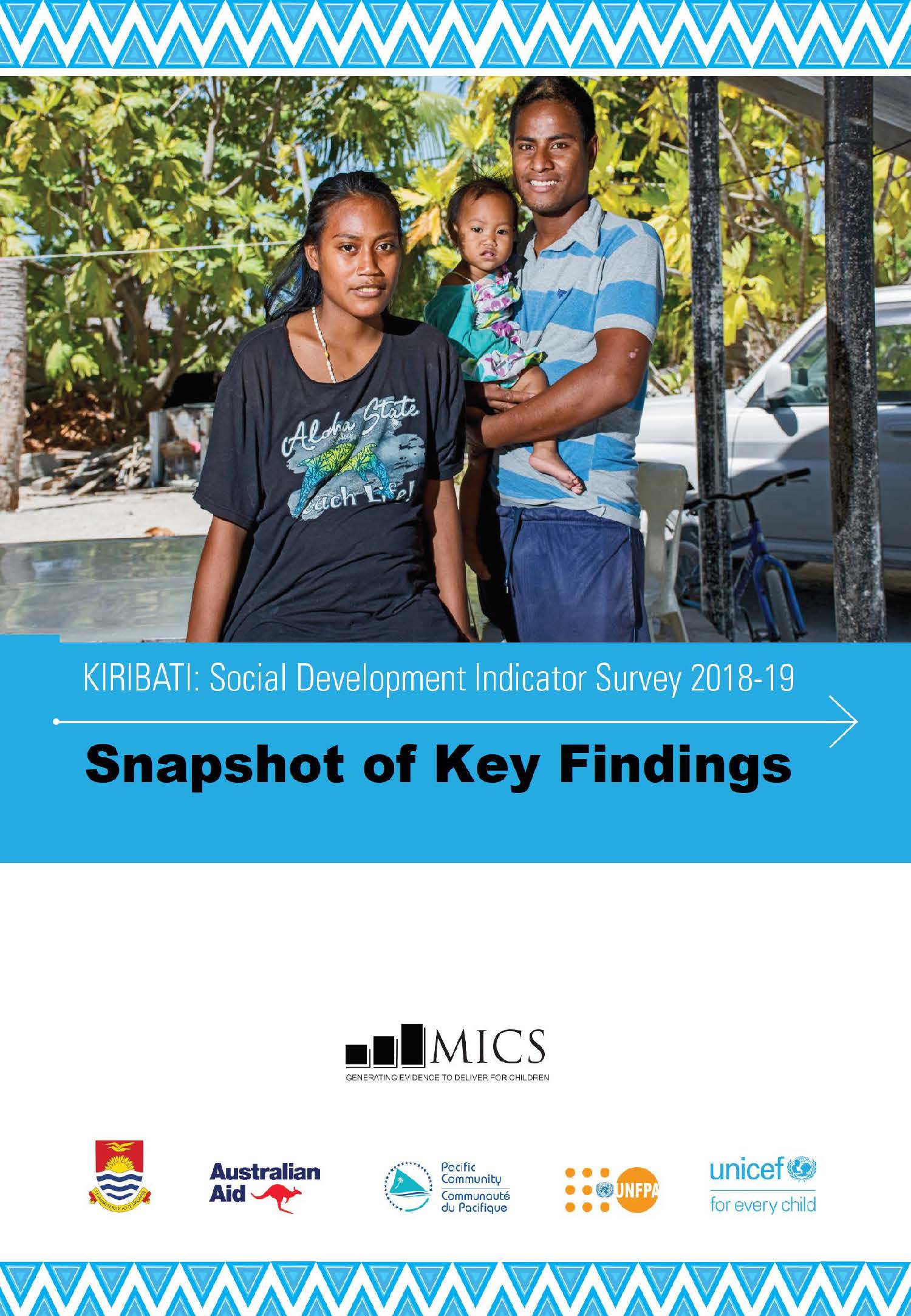
KIRIBATI: Social Development Indicator Survey 2019-19 (Snapshot of Key Findings
The Kiribati Social Development Indicator Survey (KSIDS) was carried out in 2018 2019 by Kiribati National Statistics Office in collaboration with Ministry of Health and other government ministries, as part of the Global MICS Programme. Technical support was provided by the United Nations Children’s Fund (UNICEF), United Nations Population Fund (UNFPA) and Pacific Community (SPC) with government funding and financial support of the Australian Department of Foreign Affairs and Trade (DFAT), UNFPA and UNICEF.
The State of the Pacific's RMNCAH Workforce 2019 Report
This report takes its inspiration from the United Nations Secretary-General’s Every Woman Every Child initiative, which calls for countries to do everything possible to protect the lives and futures of all women, children and adolescents. It uses a similar approach to the State of the World’s Midwifery (SoWMy) 2014 report, but focuses on Papua New Guinea (PNG) and the 14 countries supported by the United Nations Population Fund (UNFPA) Pacific Sub-Regional Office (PSRO): Cook Islands, Federated States of Micronesia (FSM), Fiji, Kiribati, Republic of the Marshall Islands (RMI), Nauru, Niue, Palau, Samoa, Solomon Islands, Tokelau, Tonga, Tuvalu and Vanuatu.
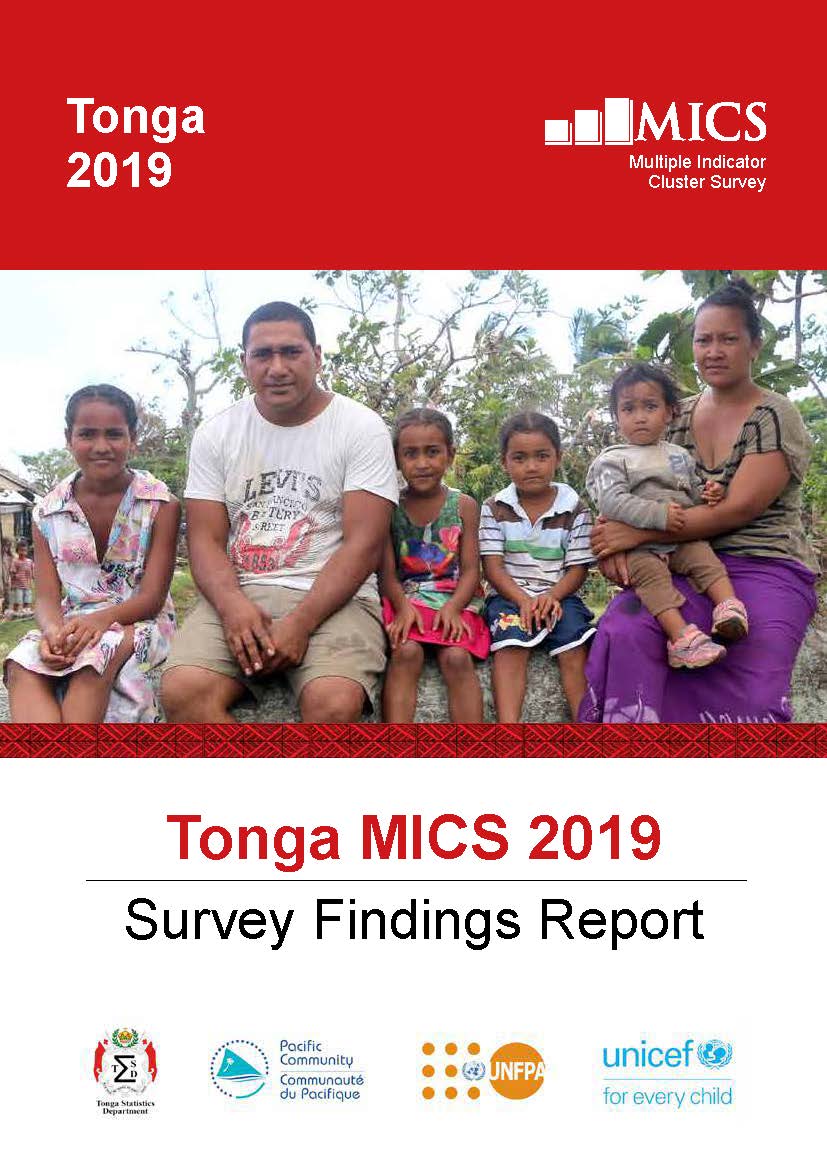
Tonga MICS 2019 Survey Findings Report
The Tonga Multiple Indicator Cluster Survey (MICS) was carried out in 2019 by Tonga Statistics Department (TSD) in collaboration with Ministry of Health, Ministry of Internal Affairs – Women’s Affairs and Gender Equality Division and other government ministries as part of the Global MICS Programme. Technical support was provided by the United Nations Children’s Fund (UNICEF), United Nations Population Fund (UNFPA) and Pacific Community (SPC) with government funding and financial support of UNICEF and UNFPA through Ministry of Health.
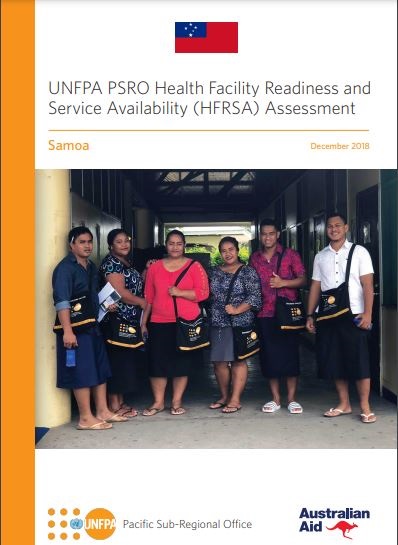
UNFPA PSRO Health Facility Readiness and Service Availability (HFRSA) Assessment
The Health Facility Readiness and Service Availability Assessment (HFRA) 2018 come at a most opportune time as the health sector moves to implement its Health Sector Plan over the period 2019 – 2030. The newly reformed Ministry of Health having officially remerged with the National Health Service in early 2019 looks to strengthen the public health system through the revitalization of Primary Health Care. This mission is in line with the 2030 Agenda and strategically places the Ministry to achieve its vision of a Healthier Samoa and efforts to achieving Universal Health Coverage.
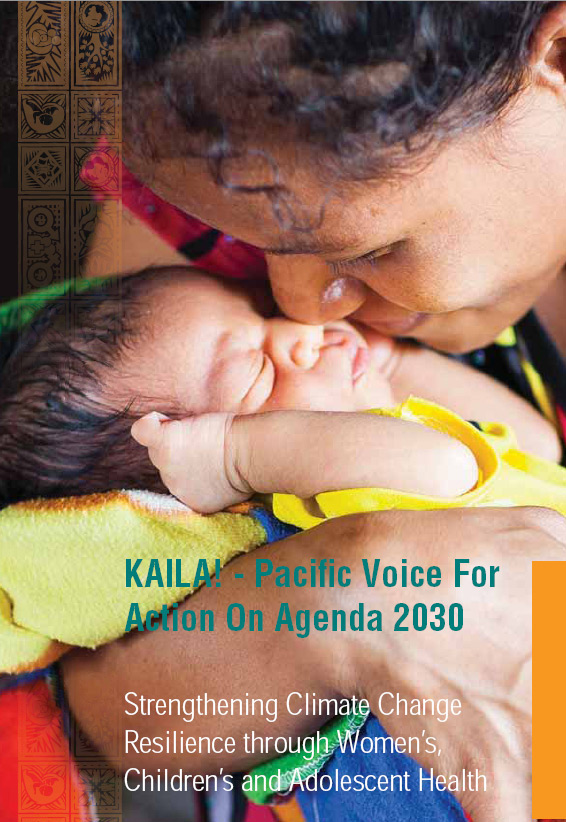
KAILA! - Pacific Voice For Action On Agenda 2030
KAILA! - Pacific Voice For Action On Agenda 2030
Strengthening Climate Change Resilience through
Reproductive, Maternal, Newborn, Child and Adolescent Health
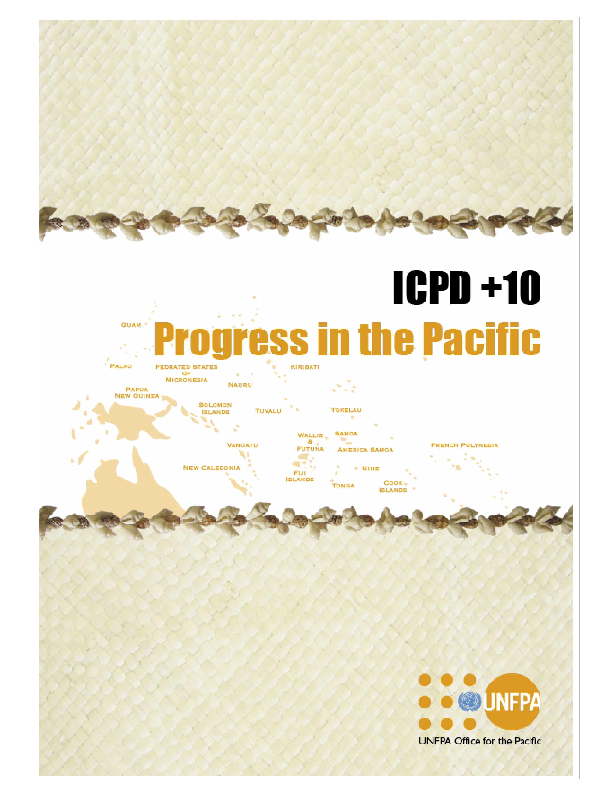
ICPD +10
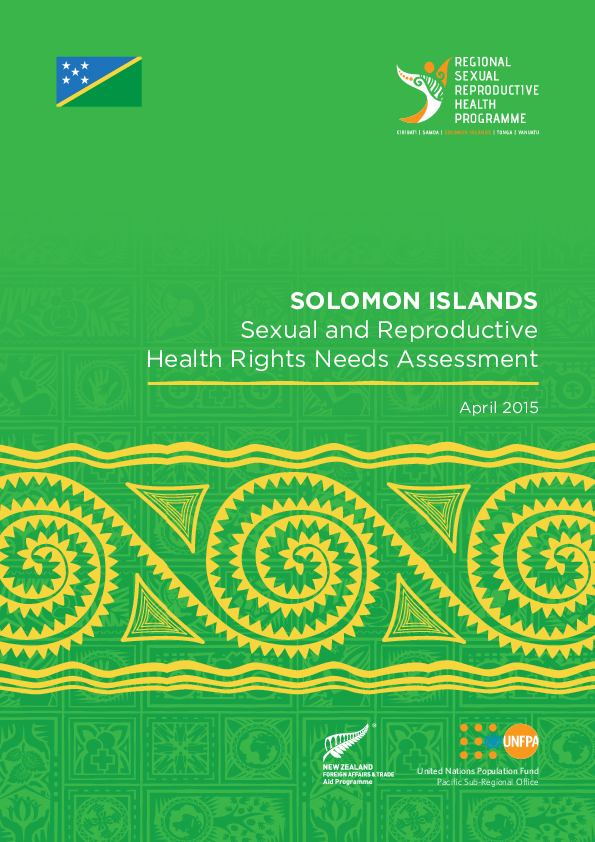
SOLOMON ISLANDS: Sexual and Reproductive Health Rights Needs Assessment
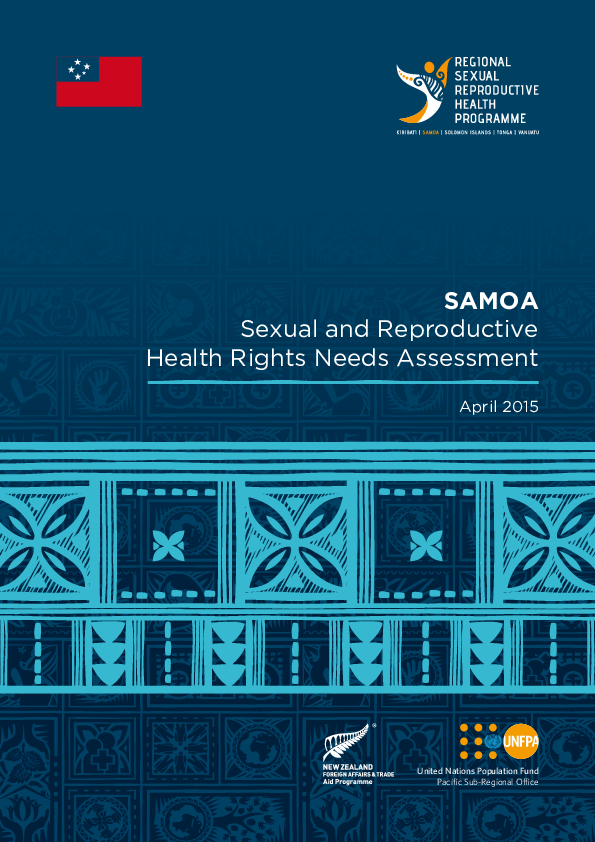
SAMOA: Sexual and Reproductive Health Rights Needs Assessment
With the conclusion of the International Conference on Population and Development (ICPD) Plan of Action in 2014, and the Millennium Development Goals (MDGs) in 2015, the United Nations Population Fund, Pacific Sub-Regional Office (UNFPA – PSRO) has commissioned technical needs assessments for Sexual and Reproductive Health and Rights (SRHR) in a number of Pacific Island Countries and Territories in 2014-15